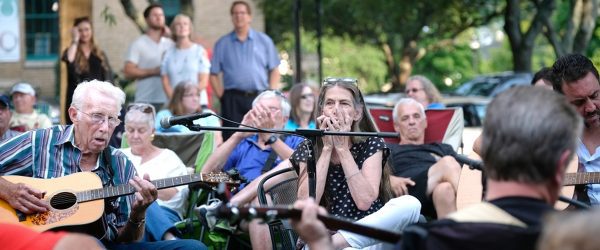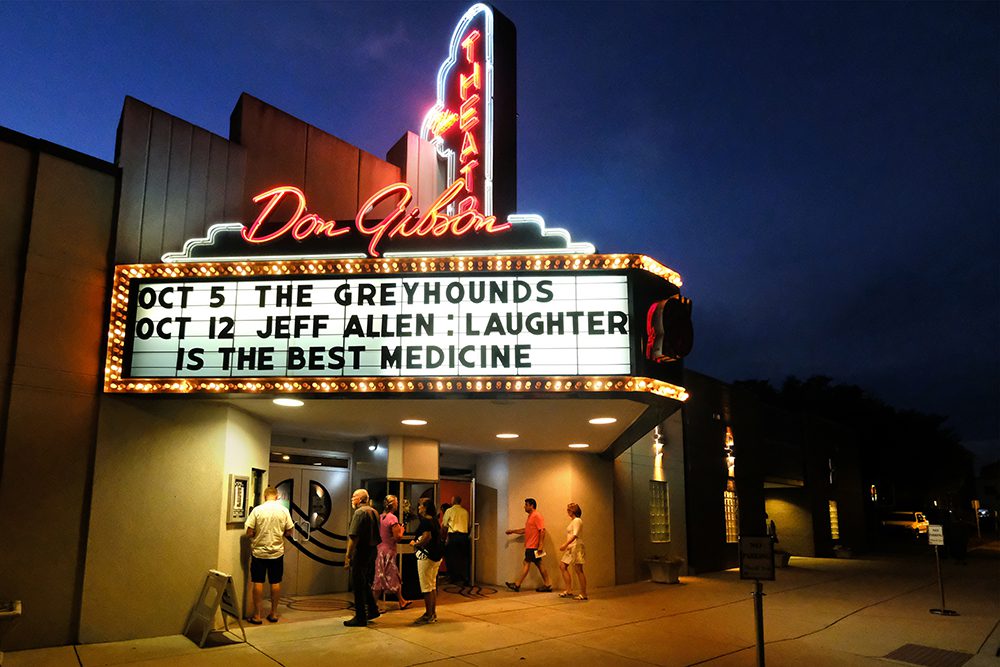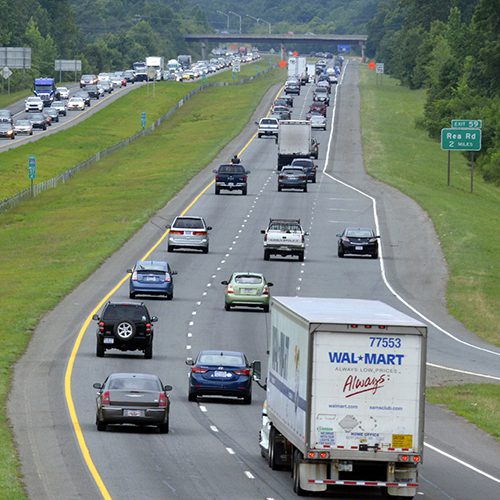Finding the music: How one North Carolina city reinvented itself

As Forbes magazine ranked Shelby, North Carolina, among America’s “most vulnerable cities” in 2008, a local task force had already set out to learn what cities in similar distress had done to pump new energy into their downtowns and draw out-of-towners.
Research led to a realization that key to Shelby’s revitalization was maximizing its singular and distinctive strengths. Interestingly, this is consistent with what UNC Charlotte’s Urban Institute was learning through its work in the Charlotte region as part of the Urban-Rural Connection project.
The Shelby task force eventually landed on an idea to embrace the area’s musical legacy and celebrate the global fame of two native sons. The best-known is Earl Scruggs, the Flint Hill farm boy whose three-finger picking on the five-string banjo revolutionized the instrument.
The other is Shelby’s own Don Gibson, nicknamed “the Sad Poet,” who wrote three of country music’s most beloved and woeful tunes: “Sweet Dreams,” “I Can’t Stop Loving You” and “Oh Lonesome Me.”
The plan called for repurposing two abandoned uptown buildings. The historic Cleveland County Courthouse would become an interactive museum to chronicle the life of Scruggs and the region of the American South that shaped him and his music.
The State, a long-closed art deco-styled movie house, would be upfitted into an intimate 400-seat concert hall named the Don Gibson Theatre with exquisite acoustics as a lure for national touring acts.

Photo: The Don Gibson Theatre in downtown Shelby, N.C. Credit: Nancy Pierce
Attracting music lovers from all over
Since the 2009 opening of the theater, music fans have come from 40 states and eight countries for 30 yearly shows. The Earl Scruggs Center, which opened in the courthouse five years later, has drawn bluegrass fans from 50 states and 20 countries.
Music lovers from as far away as Japan, Germany, Scotland and other international locations have visited the courthouse square, according to local tourism official Brownie Plaster. Destination Cleveland County’s endowment chair, Plaster makes a habit of introducing herself to people milling around the Scruggs Center.
“We were told ‘build it and they will come,’” she said. “They’re coming. They’re here.”
‘A 38-year overnight success story’
Revivalists in Shelby approached the county about a first-rate Earl Scruggs exhibit and arranged to lease the old courthouse for $1 a year. The city of Shelby had bought the empty theater 30 years earlier and was threatening to tear it down for a parking lot, until task force members asked to rent the space for the same amount, said Mayor Stan Anthony.
They hired an executive director and got input from consultants and state cultural resource officials. They brought in experts to conduct surveys and feasibility studies.
The project got the blessing of—and artifacts from—the Scruggs family in Nashville, Tennessee, including Gibson’s widow, Bobbi.
Before he died in 2012, Scruggs made three trips to Shelby for fundraising concerts. “He was very involved in the project and wanted to see it happen,” said his nephew, J.T. Scruggs.
They used $3 million of the $9 million they raised to transform the Gibson Theatre, hiring an acoustician to engineer a pristine sound. They installed cozy seats and Art Deco-inspired restrooms.
The remaining $6 million went to transforming the courthouse into the Earl Scruggs Center: Music & Stories From the American South, with the interactive museum on the ground floor and meeting/reception room in the former courtroom upstairs.
Today, the Scruggs Center draws 10,000 visitors a year — more than half from outside the county.
Catalysts triggering confidence
With attention to streetscapes, some uptown Shelby blocks look like they were lifted out of Davidson or Chapel Hill. And people are living uptown again, over storefronts and in buildings renovated for apartments. More are coming. Plans are underway for a 12-mile “rail trail” along former Norfolk Southern tracks from Shelby to the South Carolina border.
As of 2017, 88 percent of uptown’s spaces were occupied, according to Uptown Shelby figures.
Newgrass (a modernization of bluegrass) Brewing Co., which opened in 2015 in the long-abandoned 1909 Hudson’s Department Store building, provided another life boost.
“I can’t say with complete certainty that this brewery never would have happened without the Scruggs Center and Gibson Theatre, but they gave us the confidence to move forward and build on what they started,” said Roger Holland, a longtime Shelby resident and a founding board member of Uptown Shelby Association. “Yet the resurgence of downtown really has been a joint effort over the years between a lot of people who care a lot about this community.
“You could say it’s been a 38-year overnight success story.”
Related Stories
Commuters: Where they work and how they get there
Philanthropy: Can charitable giving foster greater regional connection?
 Since 1969, the UNC Charlotte Urban Institute has sought nonpartisan solutions to social, economic and environmental challenges facing communities in the Charlotte region through applied research and community outreach.
Since 1969, the UNC Charlotte Urban Institute has sought nonpartisan solutions to social, economic and environmental challenges facing communities in the Charlotte region through applied research and community outreach.
To mark its 50th year, the Urban Institute launches the Schul Forum Series on Nov. 21, which this year highlights findings from the Carolinas Urban-Rural Connections Project, a two-year research endeavor supported by the Duke Endowment aimed at identifying regional connections between urban and rural areas that can be strengthened to increase economic vitality.
As the inaugural forum approaches, Inside UNC Charlotte will share a preview of the project’s themes, outcomes and recommendations.

